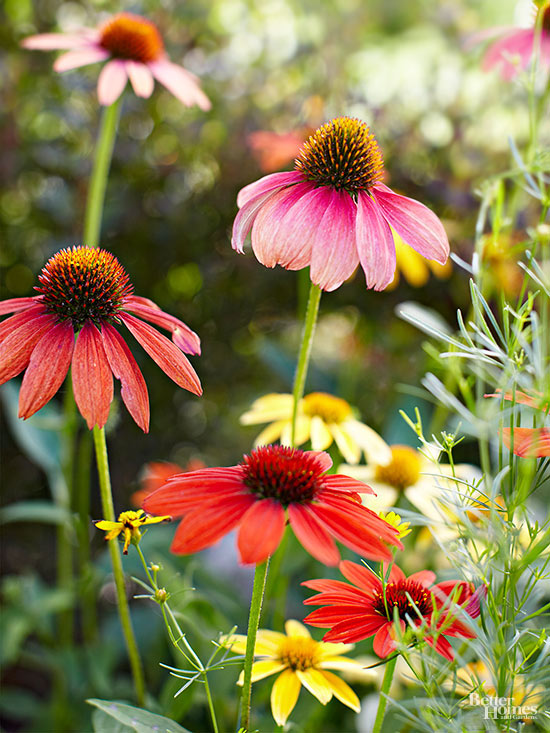






Native plants are quick-growing, super tough, and long-lived, which means you'll rarely have to buy replacements. Natives grow in sync with local conditions and can withstand regional climatic changes, be it drought, flood, frost, or blizzard. Native perennials, vines, wildflowers, and groundcovers rapidly fill out garden areas, either by reseeding or spreading, and are easily divided to create free plants for starting new gardens. Thanks to their healthy and weighty structures, native trees, evergreens, and shrubs double as screens that provide privacy and hide eyesores in the landscape.
continue reading belowEquipped with natural protections, native plants are resistant to disease, drought, and pests and grow happily without the need of pesticides. They also need very little (if any) fertilizing or watering once established. They cover ground quickly to crowd out weeds, which translates to less time spent weeding. Even the most aggressive native plants can be kept in check with strategic thinning and pruning.
Native plants' growth habits keep soil in place, store water where it's most needed, and stop storm water from running off into waterways. Their dense forms, lush foliage, and plentiful flowers break the fall of plummeting raindrops, causing rainwater to drip into (rather than flood) the soil; the plants' extensive, deep root systems siphon off moisture and prevent soil from eroding.
Planting natives allows you to build natural habitats custom-designed to accommodate local fauna. Native plants are naturally programmed to produce fruit, nectar, seeds, and nuts at the times they are needed by year-round inhabitants and passing-through critters. Surrounding your home with native plants guarantees you'll benefit from close encounters with bevies of birds, butterflies, insects, and mammals seeking food and shelter.
See hummingbird favorites.
Learn more about flowers that attract bees.
There are native plants (many with multiseasonal interest) suited to every planting site; you'll find numerous selections that grow in dry shade, sun-drenched rock gardens, boggy wetlands, shady woodlands, and refined perennial borders. Hone down your choices by touring native plantings at local nurseries and botanical gardens; take note of the native plants, their growing sites, and their native and non-native companions to help you firm up a planting plan.
Native plants create sustainable ecosystems perfectly matched to their location and the creatures that live within the ecosystem's boundaries. The plants establish a sense of place and supply a visual connection between your personal environs and your community's natural areas. They pay tribute to deserts, wetlands, and prairies of the past, while providing beauty in today's landscapes, genetic references for environmental research, and creating a healthier earth for generations to come.
See the top native plants for your region.
Copyright © www.100flowers.win Botanic Garden All Rights Reserved